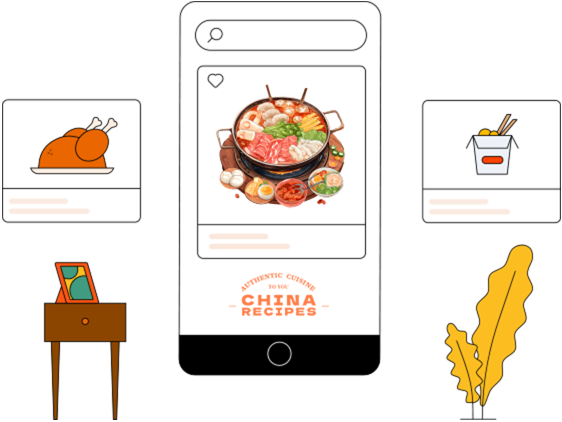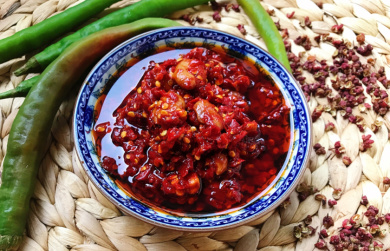Understanding "To Dice" in Cooking: What It Really Means and How to Do It
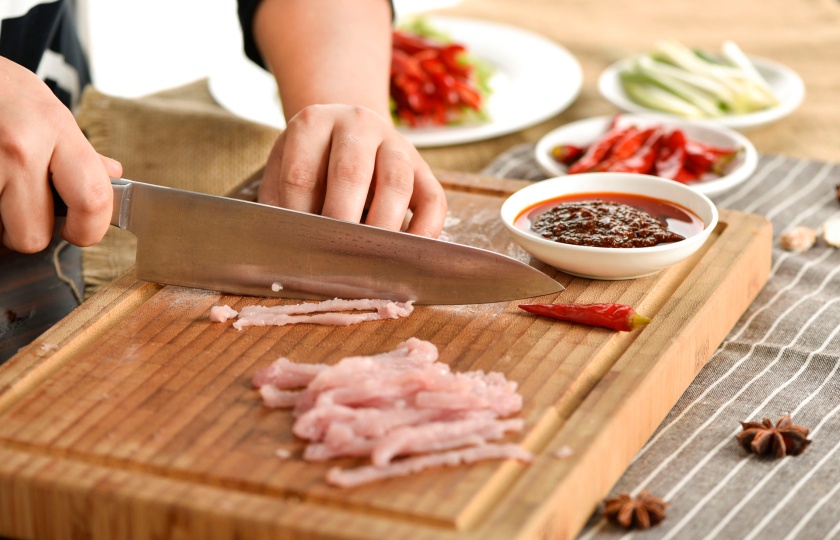
In the kitchen, ingredients can be cut into various shapes and sizes, and dicing is one of the most common methods. Today, let’s talk about the significance of dicing in cooking! Let’s dive in!
To dice meaning in cooking
Dicing plays an important role in cooking as it affects the texture, flavor, and appearance of a dish.
First, from a cooking time perspective, dicing helps ingredients heat evenly, allowing them to cook faster and absorb seasonings better, ensuring a more even flavor distribution.
Second, in terms of texture, dicing not only helps ingredients absorb more flavor, but it also changes their original texture. For example, when potatoes are diced, they become chewier, while tofu, when diced, becomes softer and more tender.
Moreover, dicing can enhance the dish’s appearance. For example, when stir-frying or stewing, diced ingredients present a neat, uniform shape, which is visually appealing and makes the dish more pleasant to eat.
Finally, dicing is also useful for pairing ingredients. When different colored ingredients are diced and combined, the dish not only looks more vibrant and appetizing but also has a stronger sense of layers.
What does mince mean In cooking?
Simply put, “chopping” means cutting ingredients into very small, fine pieces or particles using tools like knives. Typically, larger ingredients like meat, vegetables, and aromatics like ginger, garlic, and onions are placed on a cutting board and chopped using rapid, repetitive cutting motions until they are finely divided.
Chopped ingredients generally absorb flavors more easily than larger cuts, as the smaller pieces can soak up broth and seasonings and cook through more quickly. Therefore, chopping can enhance the texture and flavor of the dish.
What's the difference between chop and dice?
Here are the key differences:
Shape and Size
Chopping: Refers to cutting ingredients into irregular, very small pieces or particles. It doesn’t have a fixed shape or size and is typically smaller and more fragmented. For instance, when making dumpling filling, meat is often chopped into ground meat, or garlic, ginger, and onions are chopped into minced pieces.
Dicing: Refers to cutting ingredients into small, uniform cubes. These pieces are generally a specific size, such as 1 cm or 0.5 cm square, and are neatly shaped. Examples include diced chicken and carrots in Kung Pao Chicken, where both the shape and size are consistent.
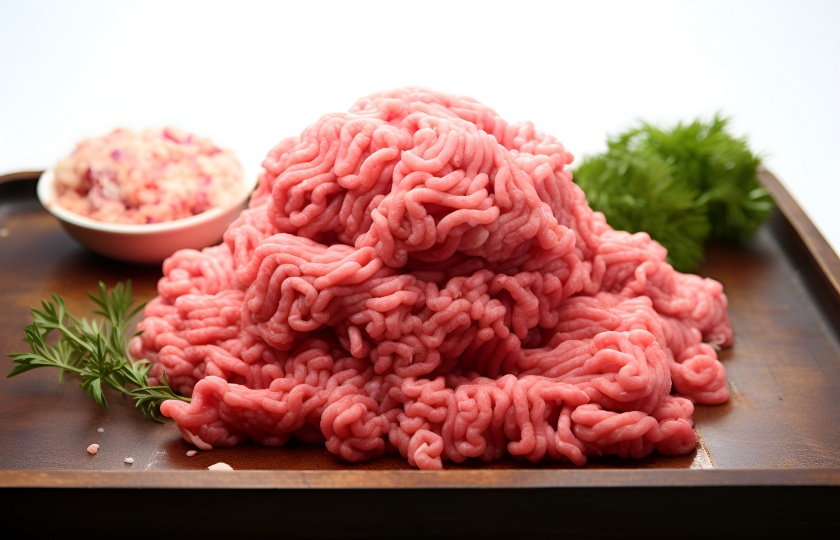
Texture
Chopping: Chopping produces a finer, more delicate texture. For example, fish chopped into small pieces makes fish balls that are tender and smooth, without any noticeable fibrous texture. Similarly, chopped vegetables create a finer filling that has a dense, smooth mouthfeel.
Dicing: Dicing maintains the shape of the ingredients, giving them a chewable, textured quality. For example, when making a stir-fry with diced potatoes, cucumbers, and ham, you can clearly feel each ingredient's individual texture—potatoes are soft and starchy, cucumbers are crisp, and ham is chewy, creating a richer mouthfeel.
Cooking Use
Chopping: Commonly used for making fillings in dishes like dumplings, buns, and wontons, where the ingredients blend well with seasonings and are easy to wrap. Chopping is also common for making meatballs or veggie balls, as it helps them hold together and cook evenly. Additionally, in making sauces like chili paste or bean paste, chopped ingredients such as chili peppers and beans are often used.
Dicing: More commonly used in stir-fries and stews, where the diced ingredients cook evenly and maintain their texture and flavor. Diced ingredients can create a visually appealing, multi-textured dish, like stir-fried shrimp with corn and peas or mixed fried rice. Dicing is also common in cold dishes like diced salad, where the uniform pieces contribute to a layered, structured dish.
Difficulty in Preparation
Chopping: Chopping requires repeated cutting, crushing, and pounding motions with a knife, which demands some physical effort. You need to control the force and rhythm carefully to avoid splattering ingredients. Chopping tough ingredients like bone-in meat can be more challenging.
Dicing: First, ingredients are sliced into thin pieces, then cut into strips, and finally diced. Dicing requires precision and uniformity to achieve the correct size, but it requires less physical effort than chopping.
Chopped vs. Diced: How Are They Different?
Chopping refers to cutting ingredients repeatedly with a knife or other tools until they become small, almost granular particles, like chopped onions or garlic, which are often used for seasoning or as a base. Chopped ingredients absorb seasonings quickly and cook more easily.
Cubing, on the other hand, involves cutting ingredients into larger, irregular pieces. For example, cubed potatoes or meat, which typically retain more of their shape and texture during cooking. Cubed ingredients often require longer cooking times to ensure they are fully cooked and maintain distinct flavors and textures.
In summary, chopping is done to make ingredients finer and more absorbent for quick cooking or seasoning, while cubing helps preserve the ingredients' shape and texture for dishes that require slow cooking or braising.
How do you diced potatoes?
Prepare the Ingredients and Tools
Potatoes: Choose firm, smooth potatoes without any sprouts or decay.
Knife: Use a sharp knife. A dull knife not only makes it harder to cut but also increases the risk of slipping and injury.
Cutting Board: Make sure the cutting board is stable. It's helpful to place a damp cloth underneath to prevent slipping.
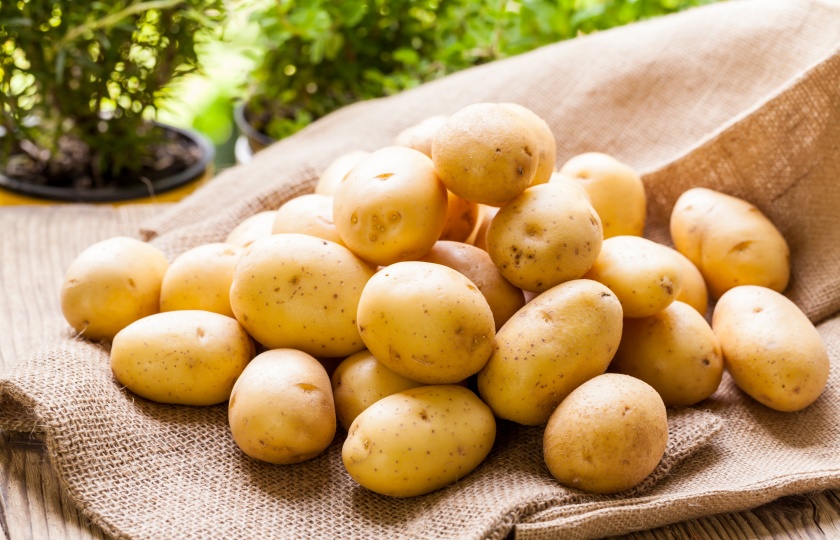
Wash the Potatoes
Rinse the potatoes under running water to remove any dirt or impurities. If there are deep grooves, gently scrape them off with a knife.
Peel the Potatoes
Use a vegetable peeler to carefully remove the skin. Try to peel as thinly as possible to minimize waste. If there are any eyes on the potato, remove them with a small knife.
Cut into Thin Slices
Place the peeled potatoes on the cutting board and cut them into thin slices with a sharp knife. Try to make the slices as even as possible, around 0.5 cm thick. To stabilize the potato, you can trim off a small piece from one end to prevent it from slipping.
Cut into Strips
Stack the potato slices and cut them into thin strips, aiming for a width of about 0.5 cm. Be mindful of your fingers to avoid cutting yourself.
Cut into Small Dice
Take the potato strips and cut them into small cubes, aiming for uniformity, about 0.5 cm square. For consistency, line up the strips before cutting.
Notes:
Keep the Knife Sharp: A dull knife can slip and make cutting more difficult. Sharpen your knife if needed.
Consistency in Size: Try to cut the potatoes into evenly sized cubes to ensure even cooking and better texture.
Soak to Remove Starch: After dicing the potatoes, soak them in water to remove excess starch. This helps prevent the pieces from sticking together and keeps them crispy during cooking.
Stabilize the Potato: If the potato keeps slipping while cutting, trim one end to create a stable base or place a damp cloth under the cutting board.
How to dice a shallot?
Once you've mastered dicing potatoes, dicing scallions is quite simple.
First, wash the scallions and trim off the roots and any old parts.
Then, separate the white and green parts because they have different textures and uses. The white part is firmer and better for dicing, while the green part is softer and is usually cut into thin slices.
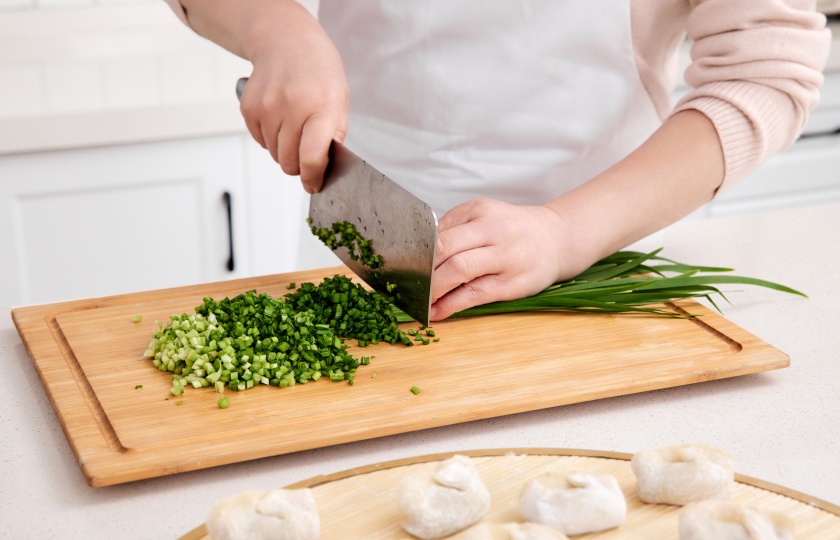
Cut the white part into 2-3 cm lengths for easier dicing. Lay the scallion sections flat on the cutting board and cut them into even strips, about 0.5-1 cm wide. Then, line up the strips and cut them crosswise into small cubes.
For the green part, slice it finely because it's tender and works best for seasoning or garnishing. The green part is often not diced but instead chopped into small bits with the back of the knife.
Evenly diced scallions can be used in stir-fries, soups, or as a garnish. The uniformity not only makes the dish look better but ensures the flavor is evenly distributed throughout.





